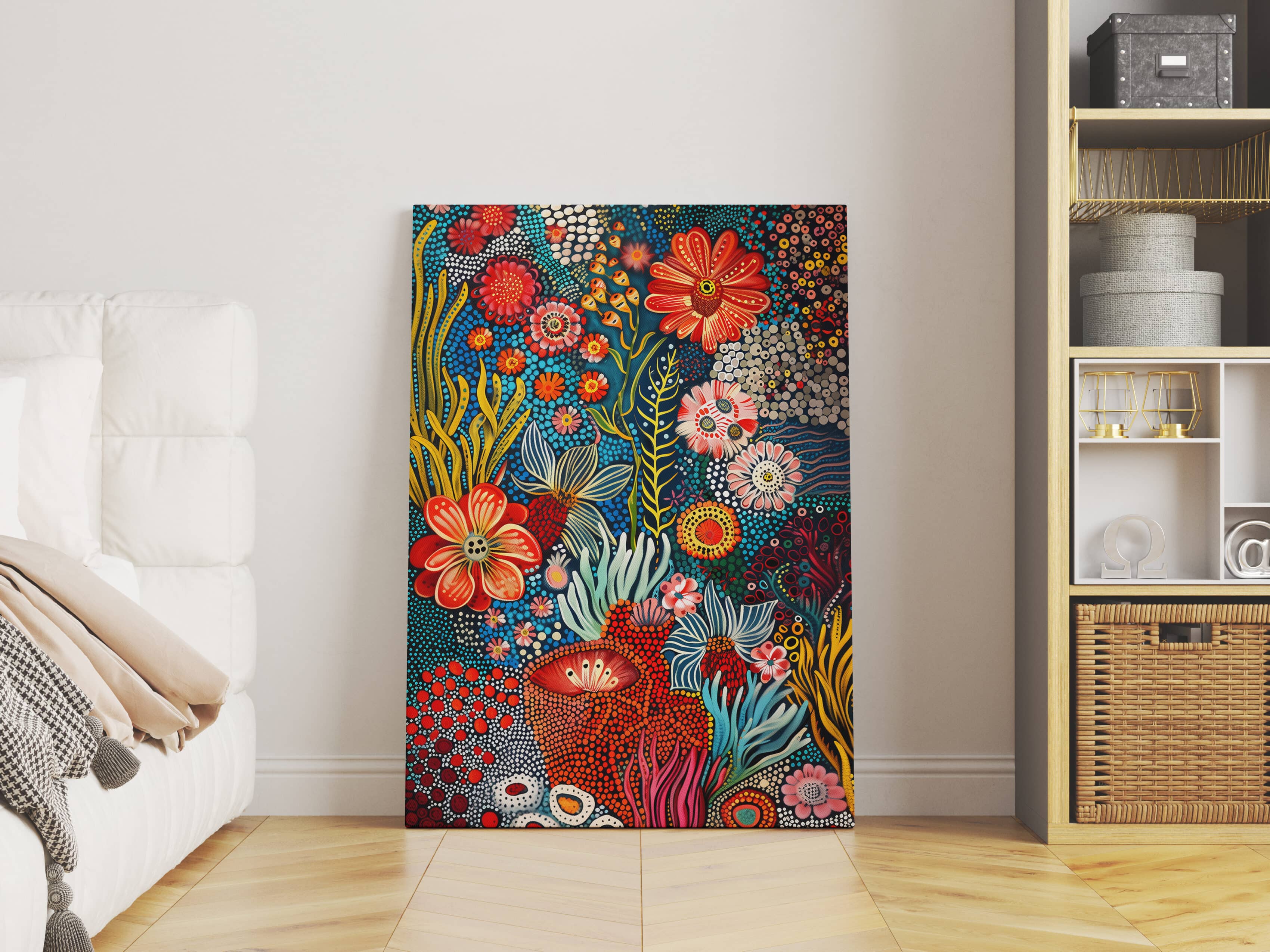
Aboriginal art, a profound cultural expression of Australia’s First Nations peoples, is far more than just visually stunning; it serves as a conduit for spiritual and cultural knowledge, connecting the past, present, and future. The art forms, rich in symbols and meanings, are deeply intertwined with the spirituality, beliefs, and traditions of Aboriginal communities. This article delves into the spiritual significance of Aboriginal art, exploring the symbols and their meanings that have been passed down through generations.
The Spiritual Essence of Aboriginal Art
For Aboriginal peoples, art is not merely a form of self-expression but a vital means of communicating their connection with the land, ancestors, and the Dreamtime — a complex concept encompassing the creation of the world and the timeless, ever-present spiritual landscape that binds everything together. Every dot, line, and color used in Aboriginal art carries a spiritual message, often representing stories of creation, laws, and the lessons imparted by ancestral beings.
Symbols as a Language of the Spirit
Aboriginal art employs a rich visual language of symbols, each with layers of meaning that can vary between regions and communities. These symbols are not just artistic elements; they are a way of preserving and transmitting knowledge. Let’s explore some of the most common symbols and their spiritual meanings.
- The Circle: In Aboriginal art, circles often represent sacred sites, waterholes, and campsites. The circle is a powerful symbol of unity, connection, and the cyclical nature of life. It can also symbolize the connection between the physical and spiritual worlds, a place where ancestors and spirits dwell.
- The Spiral: Spirals can indicate water, wind, or a journey — both physical and spiritual. The spiral is a symbol of growth and transformation, reflecting the continuous evolution of life and the spiritual path of individuals within the community.
- The Crossed Lines (Star or Compass): This symbol often represents the journey of ancestral beings across the land, mapping out the natural and spiritual landscape. It can also symbolize the meeting of paths or the intersection of spiritual and physical realms.
- Dots and Dotting Techniques: Dots are a signature element of many Aboriginal paintings, especially from the Central and Western Desert regions. The dots can represent stars, animal tracks, or the very energy that flows through the land and its inhabitants. The technique itself is deeply spiritual, often used to obscure sacred meanings from outsiders, preserving the sanctity of the stories.
- Animal Tracks: Depictions of animal tracks in Aboriginal art are not just representations of wildlife but are deeply connected to totems and ancestral beings. Each animal has a spiritual significance, often linked to the Dreamtime stories that recount the creation and laws of the land.
- The Rainbow Serpent: One of the most powerful and widely recognized symbols in Aboriginal art is the Rainbow Serpent, a creator deity and protector of water sources. It is often depicted as a large snake, symbolizing fertility, creation, and the life-giving force of water. The Rainbow Serpent is central to many Aboriginal creation myths and represents the continuity of life.
The Role of Colors in Aboriginal Art
Colors in Aboriginal art are not merely aesthetic choices but carry deep spiritual meanings. Traditionally, artists used natural ochres and earth pigments, each color having specific connotations:
- Red: Represents the earth, blood, and life force, often used in ceremonies and sacred rituals.
- Yellow: Symbolizes the sun, the giver of life, and the connection between the spiritual and physical worlds.
- White: Associated with the spirit world, death, and the ancestors.
- Black: Represents the Aboriginal people themselves and the night sky, a realm of spiritual journeys and ancestral spirits.
Art as a Living Tradition
Aboriginal art is a living tradition, continuously evolving while staying deeply rooted in spiritual and cultural practices. Contemporary Aboriginal artists often blend traditional symbols and techniques with modern mediums, creating works that resonate both within their communities and in the global art scene. Despite this evolution, the spiritual significance of their art remains intact, a testament to the enduring power of their cultural heritage.
The spiritual significance of Aboriginal art lies in its ability to convey complex cultural and spiritual knowledge through symbols, colors, and forms that have been preserved for thousands of years. It is a visual language that speaks to the heart of Aboriginal identity, connecting the past with the present, and ensuring the continuity of their spiritual traditions. Understanding these symbols and their meanings allows us to appreciate Aboriginal art not just as a form of aesthetic expression, but as a profound and sacred narrative of the world’s oldest living cultures.





